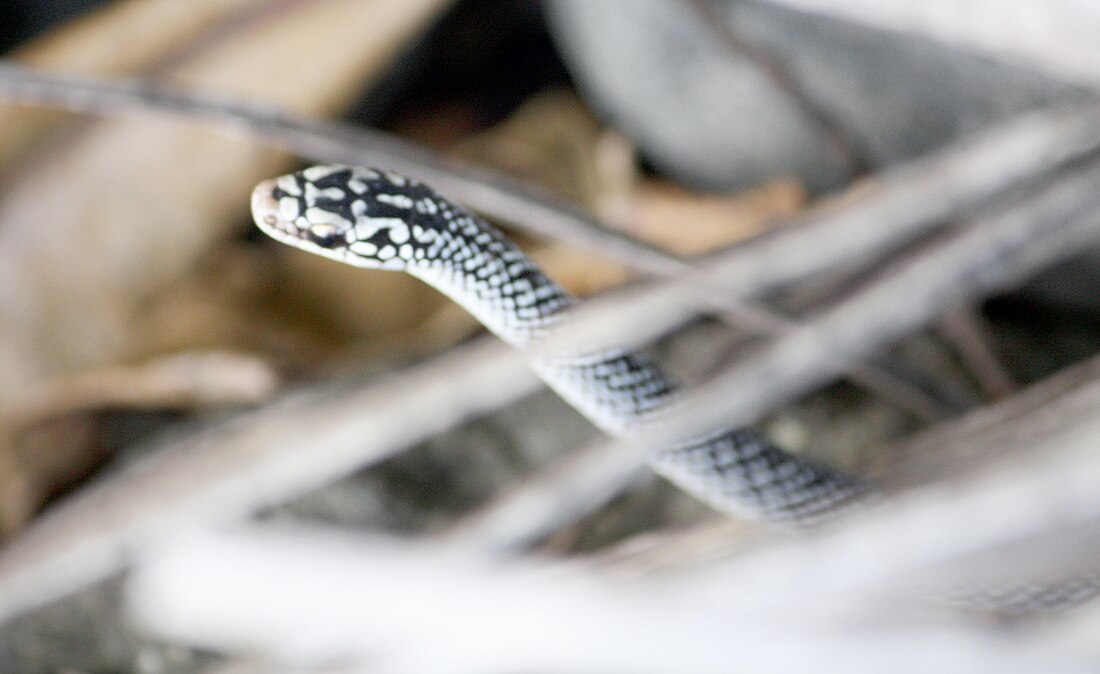Julia's ground snake (Erythrolamprus juliae) is a species of snake in the subfamily Dipsadinae of the family Colubridae. The species is found in the Caribbean, on the Lesser Antilles islands of Dominica and Guadeloupe. There are three subspecies.
| Julia's ground snake | |
|---|---|
 | |
| In Rosalie, Dominica | |
| Scientific classification | |
| Domain: | Eukaryota |
| Kingdom: | Animalia |
| Phylum: | Chordata |
| Class: | Reptilia |
| Order: | Squamata |
| Suborder: | Serpentes |
| Family: | Colubridae |
| Subfamily: | Dipsadinae |
| Genus: | Erythrolamprus |
| Species: | E. juliae |
| Binomial name | |
| Erythrolamprus juliae (Cope, 1879) | |
| Synonyms[2] | |
| |
Etymology
The specific name, juliae, is in honor of Julia Cope Collins (1866–1959), who was the only child of American herpetologist Edward Drinker Cope, the describer of this species.[3]
Classification
Erythrolamprus juliae belongs to the genus Erythrolamprus, which contains over 50 species. The genus Erythrolamprus belongs to the subfamily Dipsadinae, which is sometimes referred to as the family Dipsadidae. The relationships of Erythrolamprus species located in northern South America can be shown in the cladogram below, based on molecular DNA analysis:[4]
| |||||||||||||||||||||||||||||||||||||||||||||||||||||||||||||||||||||||||||||||||||||||||||||||||||||||
| |||||||||||||||||||||||||||||||||||||||||||||||||||||||||||||||||||||||||||||||||||||||||||||||||||||||
Subspecies
The following three subspecies have been described.[2]
- Erythrolamprus juliae copeae (Parker, 1936)
- Erythrolamprus juliae juliae (Cope, 1879)
- Erythrolamprus juliae mariae (Barbour, 1914)
The nominate subspecies, E. j. juliae, is endemic to Dominica, where it may be found everywhere but the highest elevations. E. j. copeae is found on numerous islands in the Guadeloupean archipelago, while E. j. mariae is restricted to the Guadeloupean island of Marie-Galante.[2]
The relative rareness of this species in Guadeloupe is attributed to the presence of the mongoose, which is absent from Dominica.[1]
Nota bene: A trinomial authority in parentheses indicates that the subspecies was originally described in a genus other than Erythrolamprus.
Description
E. juliae can reach half a meter (20 inches) in total length (including tail). Its coloration is typically white or yellowish flecks on a glossy dark ground color, but some individuals are uniformly dark.[citation needed]
Diet
Julia's ground snake preys upon insects, frogs, and lizards.[1]
Defensive behavior
E. juliae is harmless to humans, but may release a foul-smelling cloacal secretion if provoked.[citation needed]
References
Further reading
External links
Wikiwand in your browser!
Seamless Wikipedia browsing. On steroids.
Every time you click a link to Wikipedia, Wiktionary or Wikiquote in your browser's search results, it will show the modern Wikiwand interface.
Wikiwand extension is a five stars, simple, with minimum permission required to keep your browsing private, safe and transparent.

